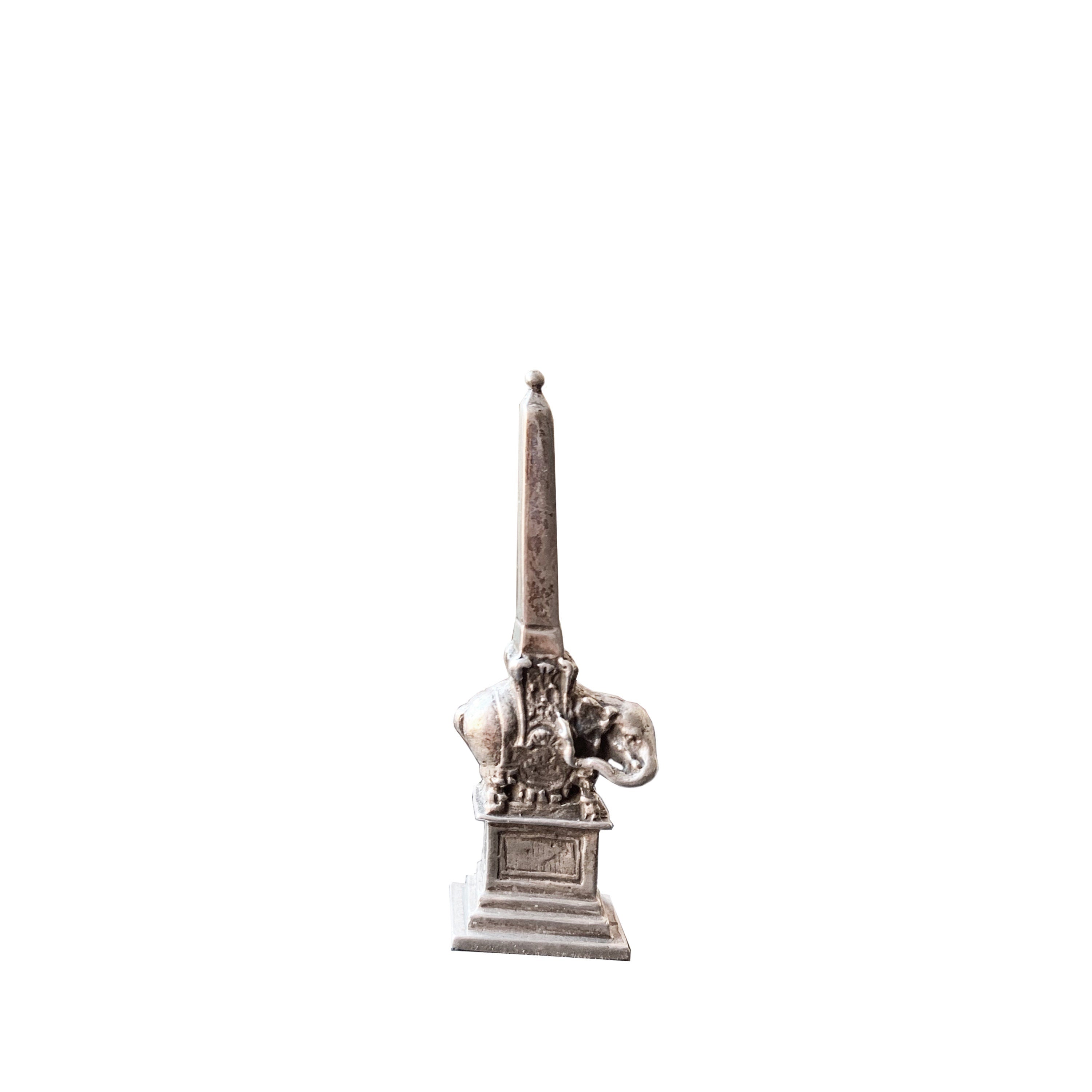Bernini's Minerva chick sterling silver statue
Adjacent to the Pantheon, right in front of the Dominican church "Santa Maria Sopra La Minerva" (St. Mary Over Minerva), stands one of Rome's most intriguing monuments, known as the "Pulcino della Minerva" or "Minerva's Chick" in English. This remarkable sculpture of an elephant, exquisitely carved and incredibly lifelike, is a masterpiece created by the renowned Gian Lorenzo Bernini.
The elephant statue carries on its back the smallest of the eleven Egyptian obelisks found in Rome, measuring 18 feet in height. This obelisk is said to have originated from Sais, where it was constructed in the 6th century BC. In 1665, the small obelisk was discovered in the backyard of the Dominican monastery near St. Mary's church. Contrary to popular belief, the church was not built on the site of a temple dedicated to Minerva but rather on a section of the Iseum, an ancient temple devoted to the Egyptian goddess Isis, who was considered Minerva's equivalent.
Pope Alexander VII decided to have the obelisk erected in front of the church and commissioned Bernini to design a monument to support it. The pope chose an elephant as the centerpiece of the design because, as the saying goes, "a strong mind is needed to support a solid knowledge." Interestingly, a Dominican priest named Father Paglia had also submitted a design proposal, envisioning the obelisk surrounded by statues of dogs, symbolizing the Dominican priests known as the "Domini Canes" or the "Lords' Dogs" to represent their loyalty to God. However, the pope favored Bernini's concept, as he wanted the monument to highlight Minerva's wisdom rather than celebrate the Dominican order.
Bernini drew inspiration for the elephant from a 15th-century novel called "Hypnerotomachia Poliphili" (Poliphilo's Strife of Love in a Dream) by Francesco Colonna, which happened to be one of the first books printed in Italy. In the story, the protagonist encounters a stone elephant carrying an obelisk, and the illustration within the book bears a striking resemblance to Bernini's design. It is believed that both Bernini and Pope Alexander VII had read the book, further fueling the connection between the novel and the sculpture.
Initially, Bernini's design featured just the elephant and the obelisk. However, Father Paglia, whose proposal had been rejected, insisted on modifying the design, citing the belief that no weight should rest vertically above an empty space—a notion accepted by the pope. Father Paglia suggested placing a cube under the elephant's belly to support the obelisk, much like the illustration in the book. Bernini strongly opposed altering his original plan, arguing that he had previously incorporated heavy elements above empty spaces in other projects, such as the Fountain of the Four Rivers in Piazza Navona. He saw Father Paglia's intervention as an unwarranted interference. Nevertheless, the pope sided with Father Paglia, and the cube was placed under the elephant's belly.
In a desperate attempt to conceal the cube, Bernini added a saddle to the elephant. However, this alteration resulted in the elephant appearing stout and comical. When the statue was unveiled in July 1667, the Roman people mockingly nicknamed it the "Porcino della Minerva" or "Minerva's Piglet." Despite the public's reaction, Bernini was not willing to let Father Paglia's modifications go unchallenged. However, due to the pope's support for the cube, Bernini's original vision could not be fully realized.







